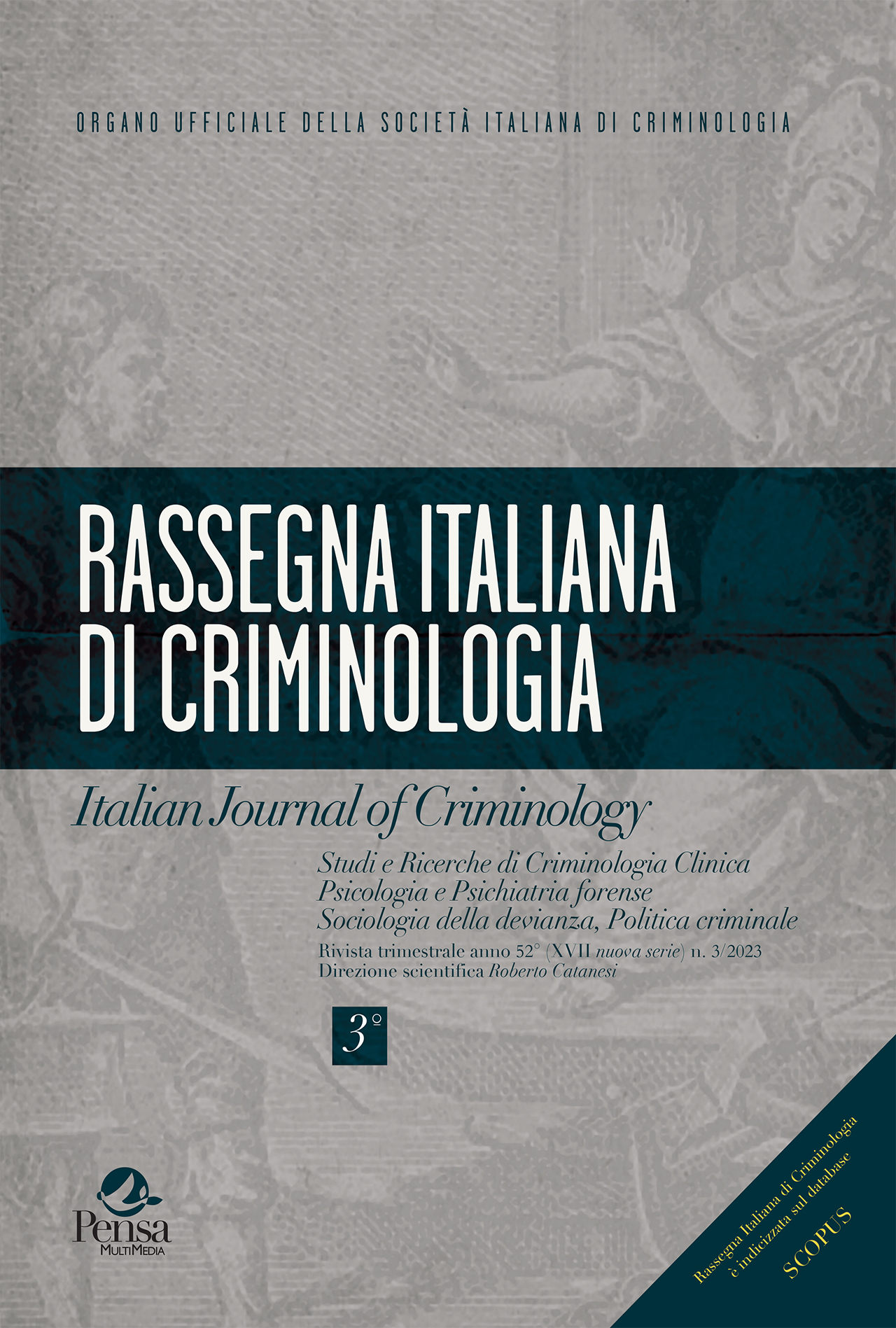Transitioning from dynamic security in italian prisons: assessing the influence of perceived insecurity on prison management
DOI:
https://doi.org/10.7347/RIC-032023-p240Abstract
In the earlier part of the decade, italian prisons inplemented the open-cell regime (custodia aperta) and dynamic security, partly as a response to being convicted of overcrowding by the European Court of Human Rights. However, the Penitentiary Administration Circular No. 3693/6143 of 2022 significantly scaled back these interventions, (re)proposing the closed-cell regime and static security to govern prisons. This study aims to clarify the reasons that prompted the shift in the paradigm. It achieved this by first outlining the strategies for prison security management promoted in Italy in the last decades. Second, it investigates the recent departure from dynamic security by looking both at the ‘inside’ and ‘outside’ of prisons. Specifically, on the one hand, prison officers’ perspectives on dynamic security are considered to understand their views on this mode of surveillance. On the other hand, policies that respond to perceived insecurity in Italian society are examined to assess their impact on both the implementation of dynamic security and the return to static security. While the study acknowledges some officers’ resistance to dynamic security, it found that the return to static security can be traced primarily to the policies of the Italian government. They have involved an increase in the inmate population (of which a high percentage is foreign) and the enhancement of the neutralising (not rehabilitating) function of punishment; these factors likely prevented the establishment of positive relationships in prison, which are at the core of dynamic security.





